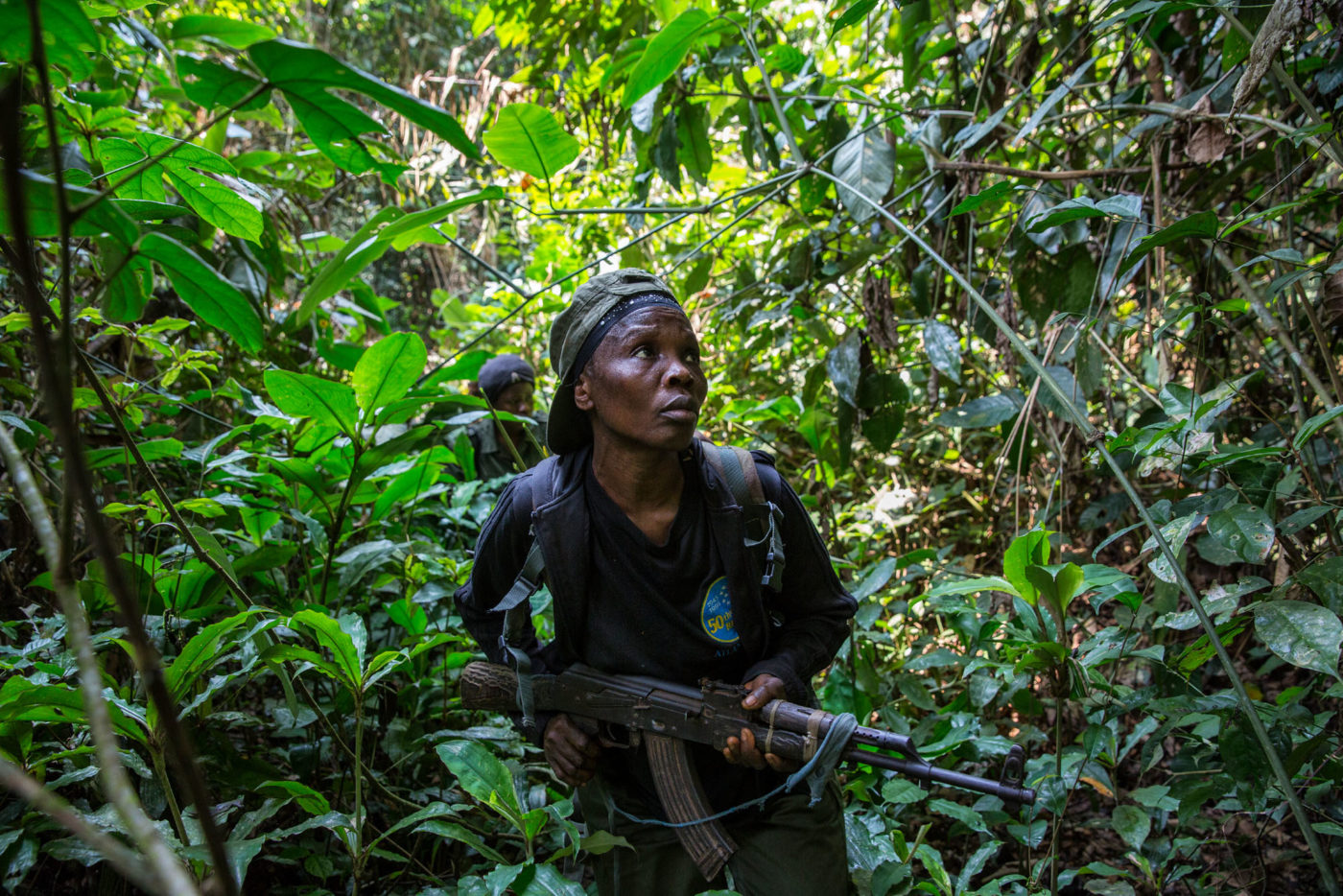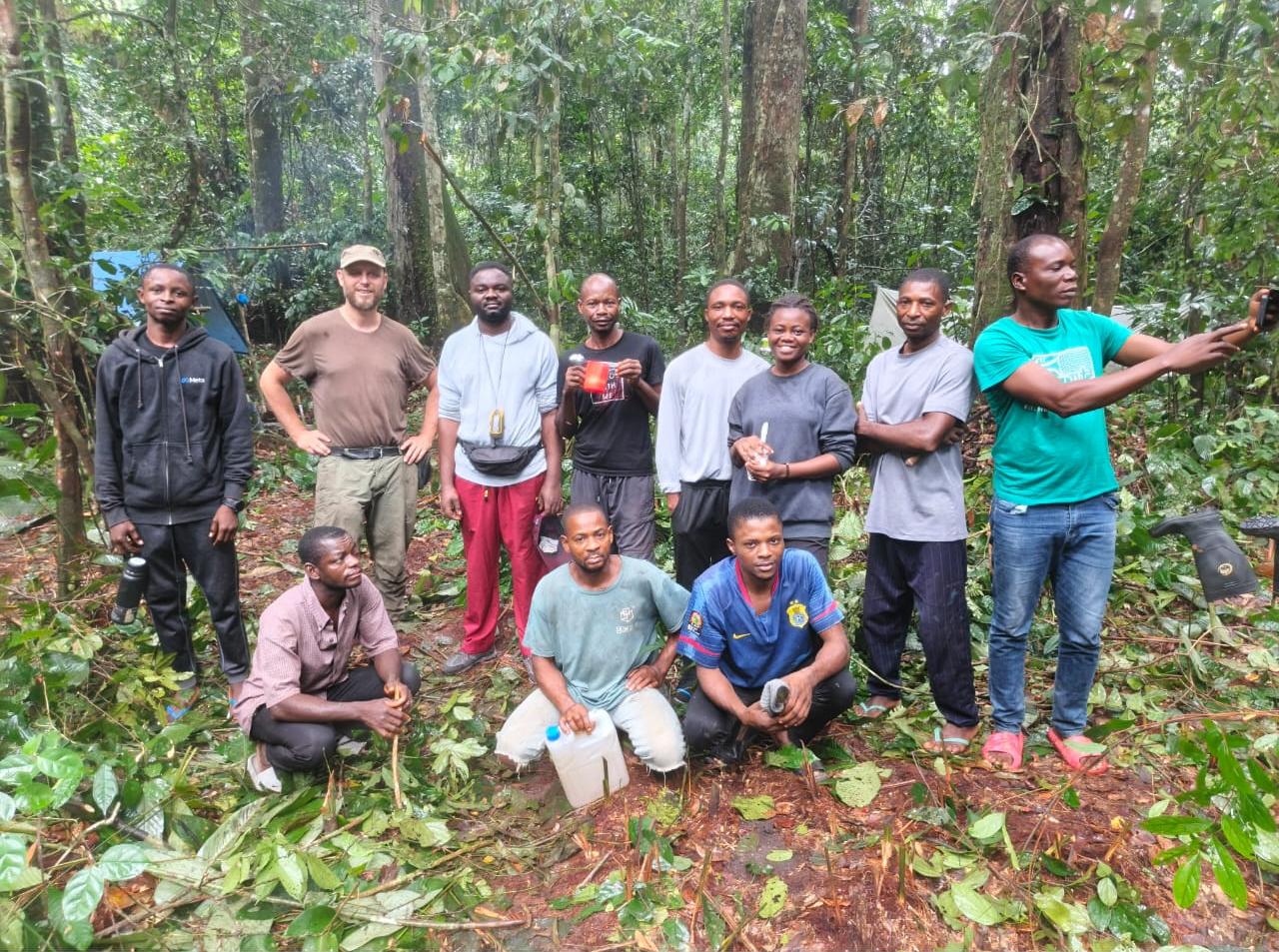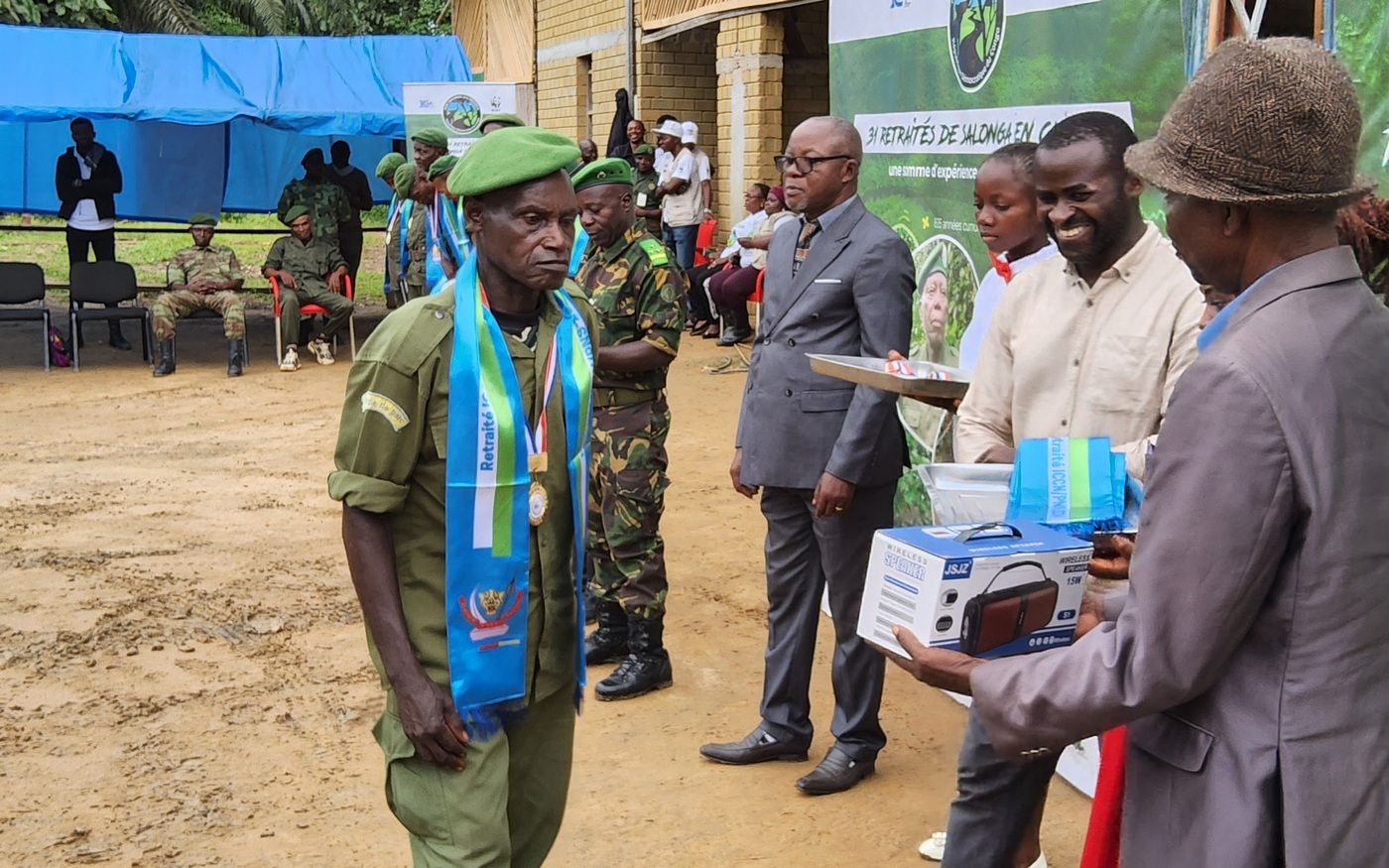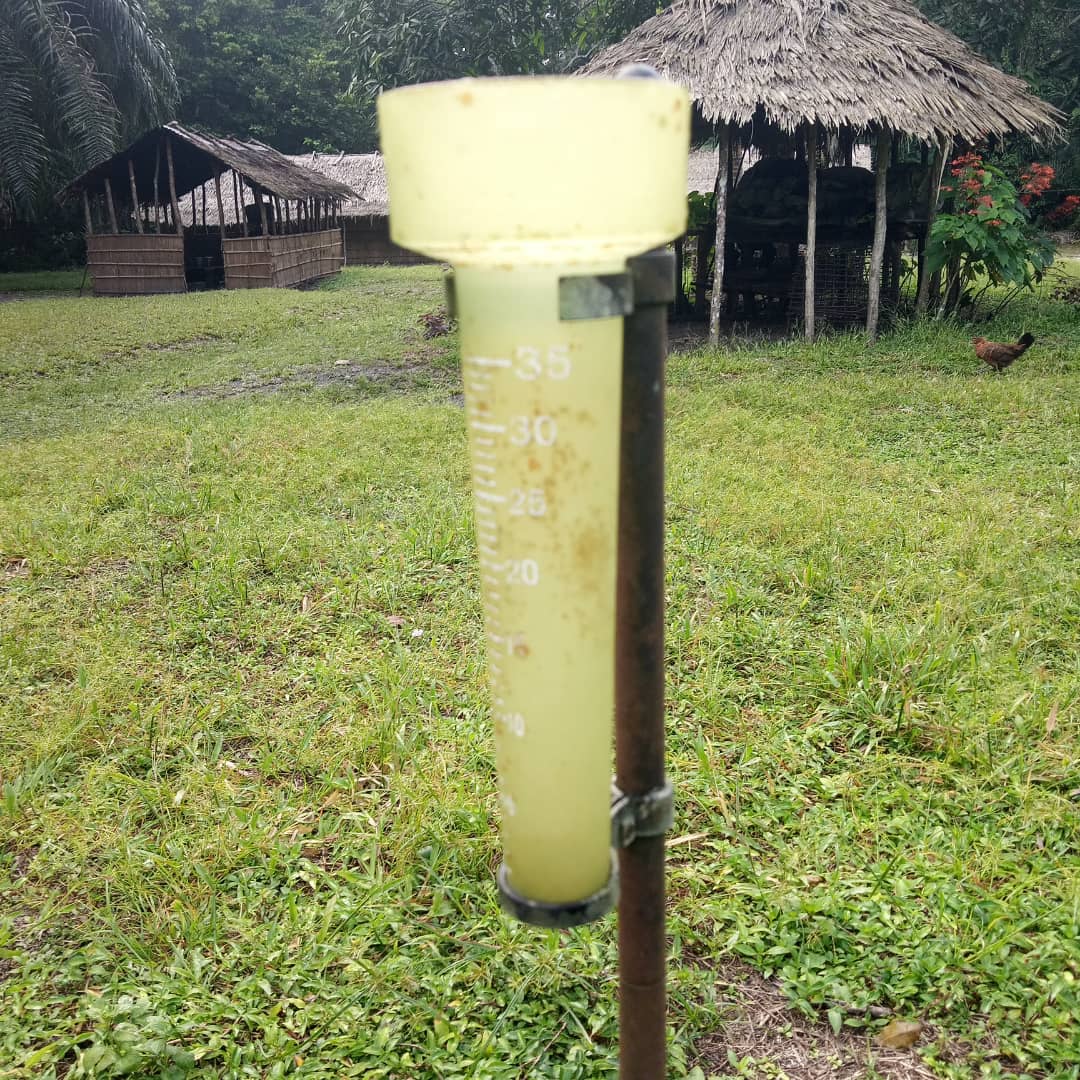Originally published in WWF-US World Wildlife Magazine Spring 2018 issue: »Saving a Forest Stronghold«
On an evening in mid-May, Nana Imbile sits beneath the thatched roof of a pavilion at a research site about 45 minutes by boat downstream from Salonga headquarters in Monkoto. She finishes a meal wrapped in banana leaves and arranges the bedding she and her fellow park rangers will share come nightfall. The forest around her is alive with the screeches of monkeys and the cries of birds. At dawn Imbile’s patrol will head deep into the jungle for two weeks.
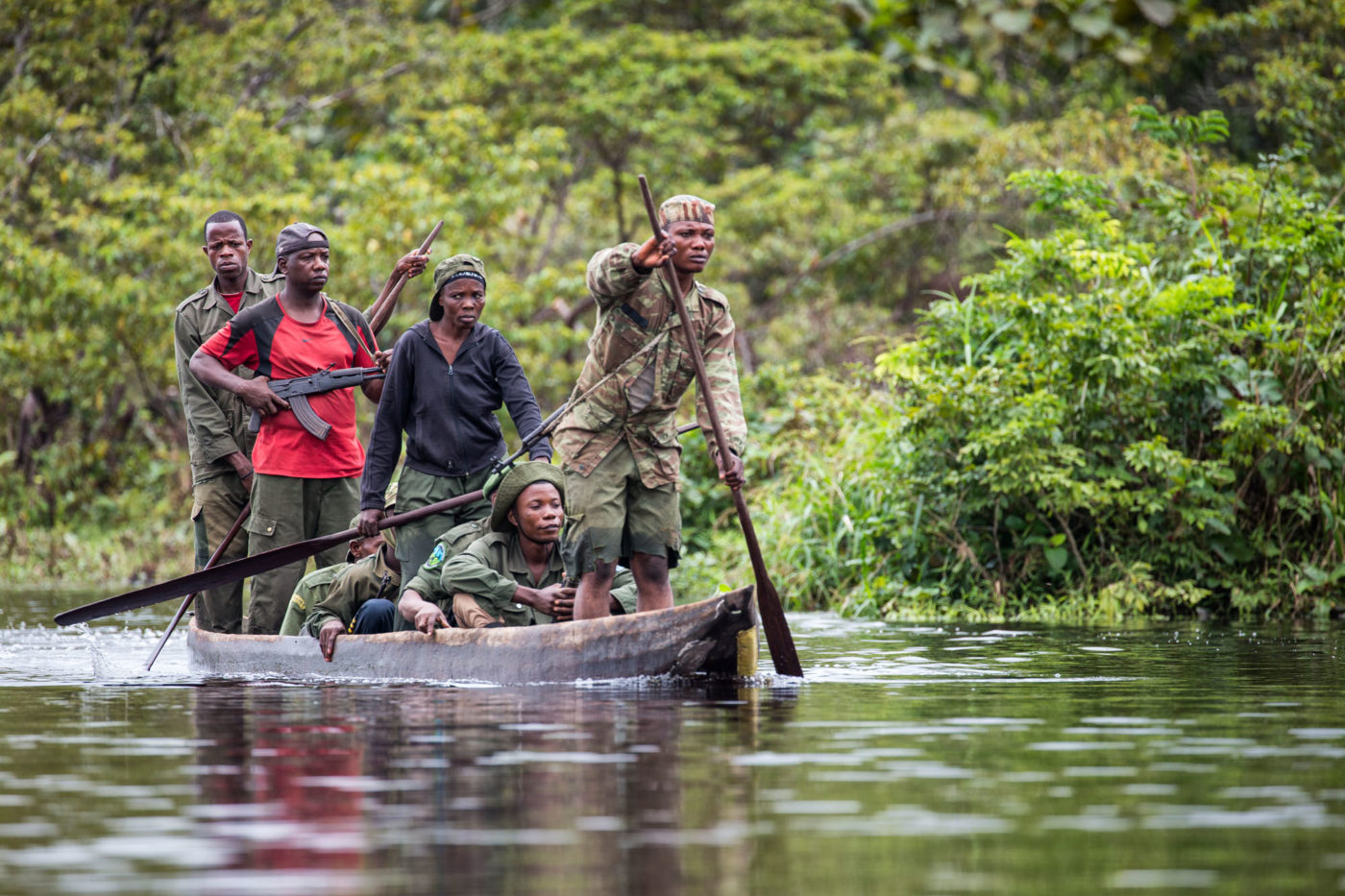
Due to the many rivers and streams the patrols use canoes to reach their posts in the forest.
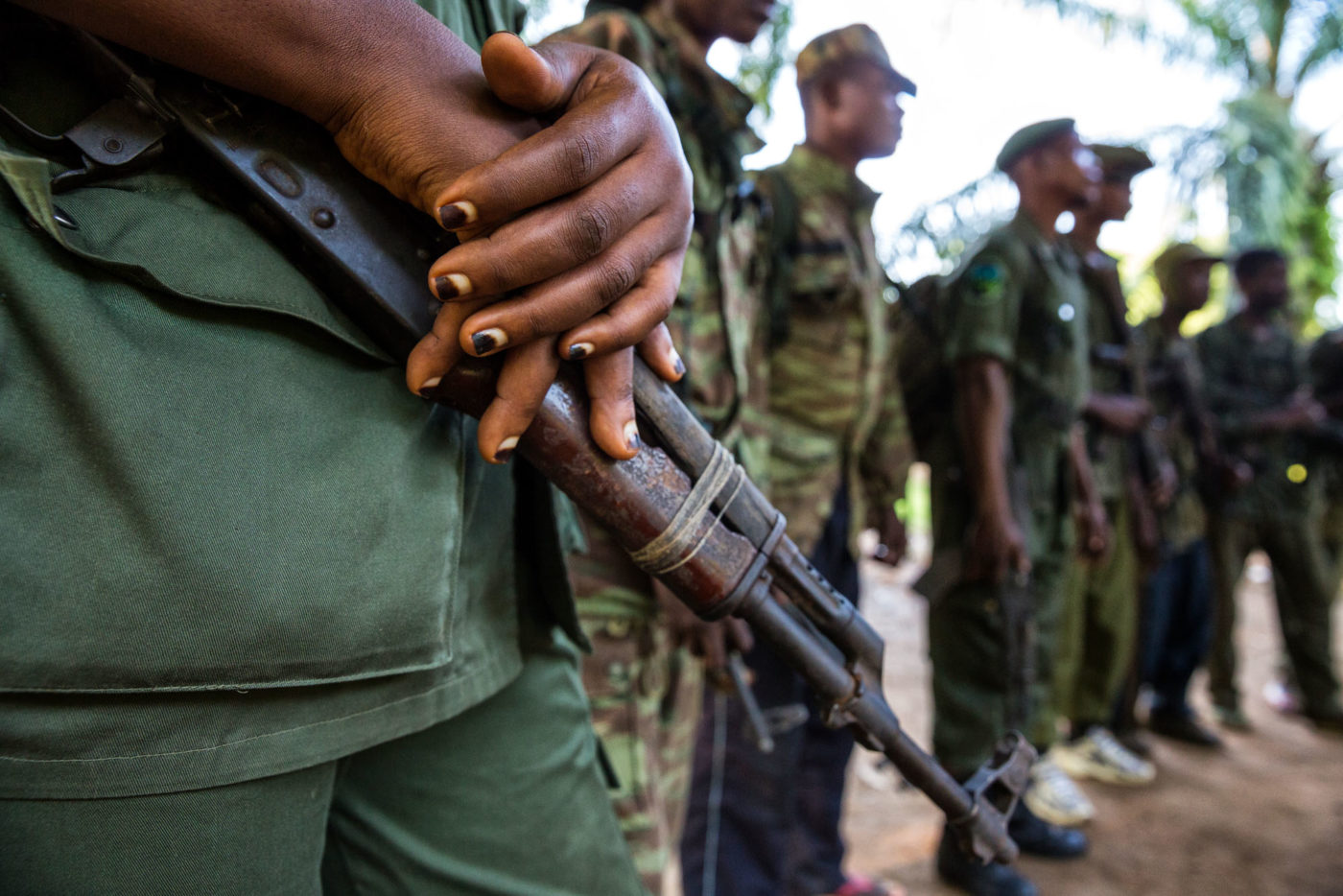
Early morning gathering of the guards before leaving on patrol to the dense forest.
250 rangers – millions of acres
Imbile is one of 16 women who serve as park rangers in Salonga, and one of only eight who patrol the park. Rangers patrol in groups of 15, but often split into two groups to cover more ground. They rarely follow paths, particularly in the vast swampy parts of the park where water can reach their waists. Using GPS to mark animal sightings and signs, they keep an eye out for footprints and small broken branches, which poachers sometimes snap, Hansel-and-Gretel style, to help them retrace their paths.
Just 250 rangers monitor millions of acres here, and they do so with insufficient equipment and almost no communications infrastructure. The park’s many wetlands and flooded forests compound mobility challenges caused by the lack of roads and airstrips. Commercial poachers, by contrast, make use of extensive, organized networks to acquire illegal automatic weapons, ammunition, communications tools, and a host of other resources that put them at a distinct advantage over Imbile and her colleagues.
A threat to the park
These poachers are among the greatest threat to Salonga and the future of wildlife within its borders, targeting forest elephants for their ivory, as well as “bushmeat” species such as antelopes, buffalo, and monkeys. Overfishing is impacting river life, and the use of mosquito nets to indiscriminately capture fish of all sizes disrupts reproduction cycles. Traversing inward from urban centers hundreds of miles away, poachers penetrate the park by way of large, navigable rivers. Bushmeat reaches markets as far away as the capital city of Kinshasa, some 430 miles southwest; ivory enters the international illegal wildlife trade to meet demand from other countries, mainly in Asia.
Such large-scale poaching wasn’t always part of Salonga’s story. The Congolese government officially defined the boundaries of the park in 1970, but locals continued to hunt rodents, antelope, river hogs, and other animals for food. While technically illegal, the practice was inconsequential relative to the large-scale commercial elephant poaching that increased sharply in the 1980s as international ivory prices shot skyward. Criminal activity in those years so ravaged certain wildlife populations that Salonga landed on the UNESCO list of World Heritage Sites in danger in 1999. In recent years, demand from Asia has spurred a resurgence in illegal ivory trading, and a second wave of heavily armed criminals with a seemingly endless supply of ammunition has swept across the park.
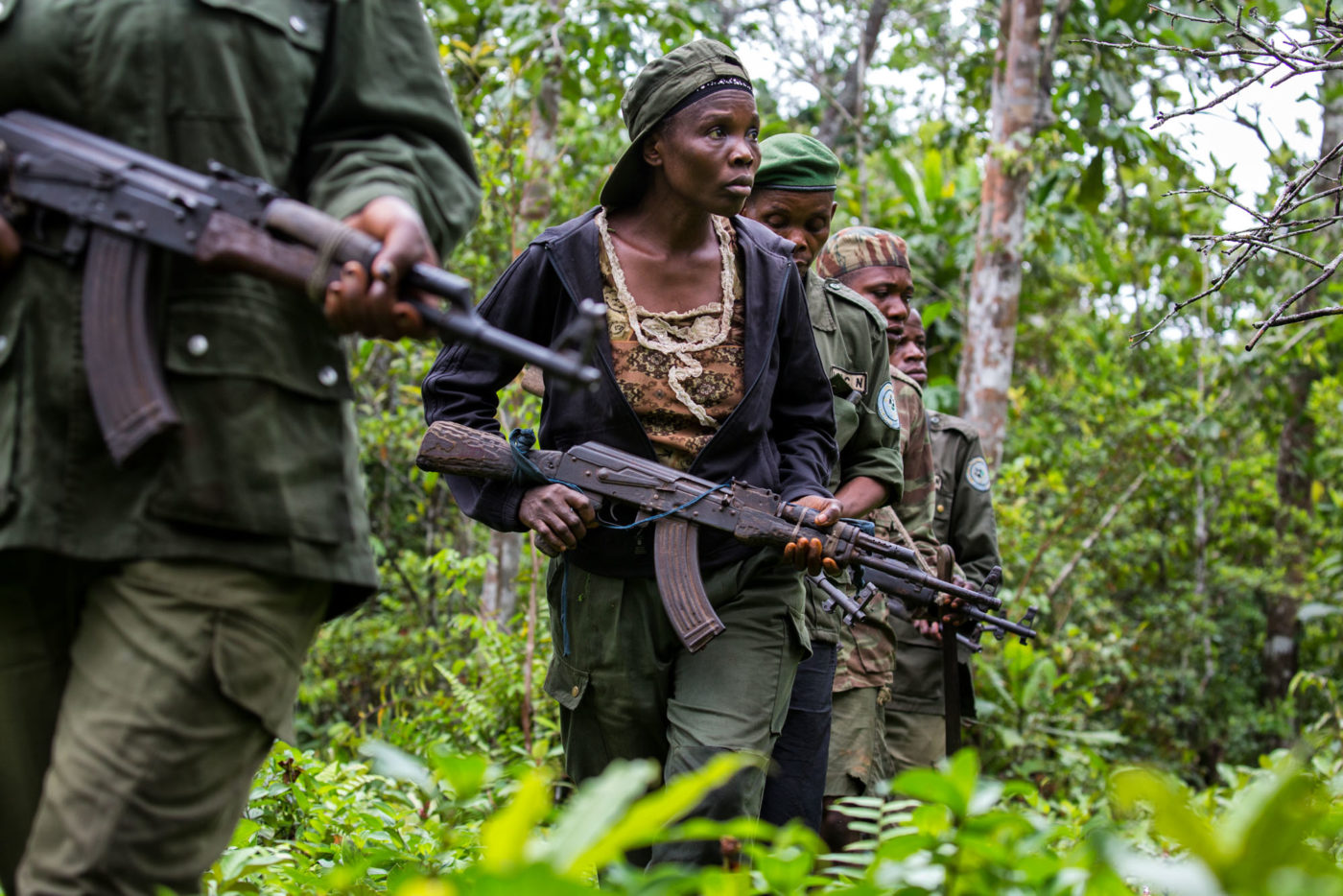
Patrol of the Salonga eco-guards advancing through the forest. Nana is one of 16 female eco-guards.
Imbile, for one, is acutely aware of what insufficient resources mean for her and the wildlife she protects.
“There are animals that will disappear,” she says, shaking her head. The sun’s almost set now, and several rhinestones glint from the headscarf she wears beneath her standard-issue army hat. “Unless we work well, poachers will finish off the wildlife.”
The increase in the number of forest rangers is crucial to securing the boundaries, and WWF and ICCN aim to nearly double the number of rangers within five years.
»Unless we work well, poachers will finish off the wildlife.«
